AUDREY, HER LIFE OF LOVING AND LOSING
AUDREY, HER LIFE OF LOVING AND LOSING
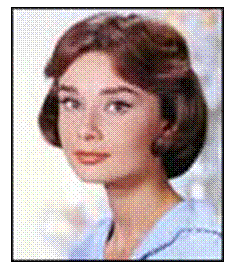
<!--- Celeb code here -->Audrey Hepburn
I probably hold the distinction of being
one movie star who, by all laws of logic,
should never have made it.At each stage
of my career, I lacked the experience.
-Audrey Hepburn
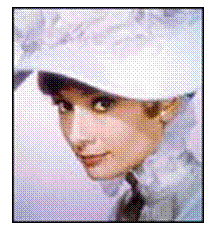 THERE probably never will be another actress on the silver screen who projects as much radiance, charm, and elegant beauty as Audrey Hepburn did. She arrived in Hollywood at a time when impossibly upholstered blondes dominated the town like a tribe of buxom Amazons, and quietly introduced an enchanting brand of doe-eyed, nymph-like incandescence, fused with a gamine chic and sophistication, that provided a novel alternative to the lush prototype of the day. The physical antithesis of home-grown glamour queens like Marilyn Monroe and Ava Gardner, Hepburn was slender, tomboyish, and singularly ethereal. Director Billy Wilder once commented of the eminently photogenic actress, "After so many drive-in waitresses--it has been a real drought--here is class, somebody who went to school, can spell, and possibly play the piano. . . She's a wispy, thin little thing, but you're really in the presence of somebody when you see that girl." THERE probably never will be another actress on the silver screen who projects as much radiance, charm, and elegant beauty as Audrey Hepburn did. She arrived in Hollywood at a time when impossibly upholstered blondes dominated the town like a tribe of buxom Amazons, and quietly introduced an enchanting brand of doe-eyed, nymph-like incandescence, fused with a gamine chic and sophistication, that provided a novel alternative to the lush prototype of the day. The physical antithesis of home-grown glamour queens like Marilyn Monroe and Ava Gardner, Hepburn was slender, tomboyish, and singularly ethereal. Director Billy Wilder once commented of the eminently photogenic actress, "After so many drive-in waitresses--it has been a real drought--here is class, somebody who went to school, can spell, and possibly play the piano. . . She's a wispy, thin little thing, but you're really in the presence of somebody when you see that girl."
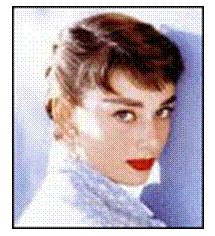 The daughter of an English banker and a Dutch baroness, Hepburn received ballet training during her upbringing in the Nazi-occupied Netherlands (she performed in underground concerts to raise funds for the Dutch Resistance during the war, as well as acted as a courier). Also an experienced model and occasional actress, she was appearing in a bit-part capacity on a film shoot in the South of France when she met the French author Colette, who offered her the title role in a Broadway adaptation of her novel, Gigi. Following that auspicious Stateside debut, Hepburn's reed-like elegance was used to smashing effect in her lead role of a runaway princess in the romantic comedy Roman Holiday (1953), in which she starred opposite Gregory Peck. She scored the Best Actress Oscar for her performance in the film, not to mention instant international fame. The daughter of an English banker and a Dutch baroness, Hepburn received ballet training during her upbringing in the Nazi-occupied Netherlands (she performed in underground concerts to raise funds for the Dutch Resistance during the war, as well as acted as a courier). Also an experienced model and occasional actress, she was appearing in a bit-part capacity on a film shoot in the South of France when she met the French author Colette, who offered her the title role in a Broadway adaptation of her novel, Gigi. Following that auspicious Stateside debut, Hepburn's reed-like elegance was used to smashing effect in her lead role of a runaway princess in the romantic comedy Roman Holiday (1953), in which she starred opposite Gregory Peck. She scored the Best Actress Oscar for her performance in the film, not to mention instant international fame.
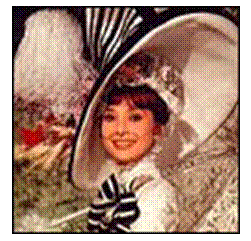 Hepburn would go on to score four more Oscar nominations over the course of her film career: for her fetching chauffeur's daughter in Sabrina (1954); her conflicted woman of God in The Nun's Story (1959); her unforgettable Holly Golightly in Breakfast at Tiffany's (1961); and her terrorized blind woman in Wait Until Dark (1967). In her memorable portrayal of guttersnipe turned gentlewoman Eliza Doolittle in My Fair Lady (1964), she relayed a certain flair for Cockney-speak, if not for singing (her musical segments were dubbed), and she scored a direct hit with her delightful performance as Albert Finney's bickering wife in Stanley Donen's Two for the Road (1967). Hepburn's appearances in film, while rare, were uniformly enchanting, but not necessarily because she was all that brilliant an actress--quite simply, Audrey Hepburn didn't have to act, she just had to be. Hepburn would go on to score four more Oscar nominations over the course of her film career: for her fetching chauffeur's daughter in Sabrina (1954); her conflicted woman of God in The Nun's Story (1959); her unforgettable Holly Golightly in Breakfast at Tiffany's (1961); and her terrorized blind woman in Wait Until Dark (1967). In her memorable portrayal of guttersnipe turned gentlewoman Eliza Doolittle in My Fair Lady (1964), she relayed a certain flair for Cockney-speak, if not for singing (her musical segments were dubbed), and she scored a direct hit with her delightful performance as Albert Finney's bickering wife in Stanley Donen's Two for the Road (1967). Hepburn's appearances in film, while rare, were uniformly enchanting, but not necessarily because she was all that brilliant an actress--quite simply, Audrey Hepburn didn't have to act, she just had to be.
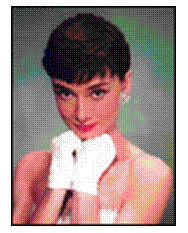 Hepburn devoted most of her time in the 1970s to raising her children, with film and stage appearances becoming few and far between. In the late 1980s, she succeeded Danny Kaye as the official spokesperson of UNICEF, and in her unceasing and tireless crusading on behalf of the world's children, she earned perhaps even more admirers worldwide than she did with her film career. There was something so very fitting about the still breathtaking Hepburn's final film performance in 1989's Always: she played an angel named Hap. Hepburn was posthumously awarded the Jean Hersholt Humanitarian Award in 1993, shortly after she succumbed to colon cancer. Hepburn devoted most of her time in the 1970s to raising her children, with film and stage appearances becoming few and far between. In the late 1980s, she succeeded Danny Kaye as the official spokesperson of UNICEF, and in her unceasing and tireless crusading on behalf of the world's children, she earned perhaps even more admirers worldwide than she did with her film career. There was something so very fitting about the still breathtaking Hepburn's final film performance in 1989's Always: she played an angel named Hap. Hepburn was posthumously awarded the Jean Hersholt Humanitarian Award in 1993, shortly after she succumbed to colon cancer.
|